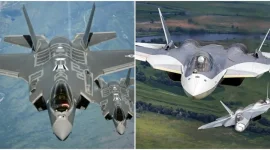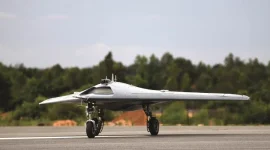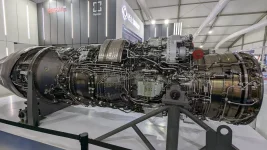- Views: 2K
- Replies: 12
In a crucial step forward for India's premier indigenous defence project, the Aeronautical Development Agency (ADA) has initiated a tender to build highly detailed models of the Advanced Medium Combat Aircraft (AMCA) for intensive wind tunnel testing.
This development runs alongside the aircraft's ongoing design review and prototype manufacturing, signalling a critical phase of refinement for the fifth-generation stealth fighter's airframe and low-observability features.
The advanced testing is a standard and vital part of the development cycle for such complex aircraft and is not expected to delay the programme's ambitious timelines. The first flight of the AMCA is currently projected for 2029.
Officials associated with the project have clarified that these tests are designed to meticulously validate the aircraft's aerodynamic performance, the effectiveness of its flight control surfaces, and its critical stealth characteristics across a wide range of flight conditions.
The scale models will be subjected to subsonic, transonic, and supersonic speeds to collect precise data, which will help in finalising the aircraft's configuration before it takes to the skies.
An ADA official emphasised that the request for proposal for these models is a scheduled part of the iterative design and validation process. They expressed confidence that this testing phase will not impact the planned rollout of the first prototype, provided it continues in parallel with the critical design review and manufacturing, as is currently the plan.
The tender specifies the need for extremely precise, instrumented scale models of the AMCA. These models will be equipped with features such as surface pressure sensors and force balances to measure aerodynamic loads.
Importantly, they will also be used for evaluating the aircraft's Radar Cross-Section (RCS), a key measure of its stealth capability. Additionally, structural test boxes will be fabricated to analyse internal stress and load distribution during complex flight manoeuvres and when carrying weapons.
The AMCA programme, managed by the ADA under the broader Defence Research and Development Organisation (DRDO), represents a significant leap in India’s military aviation capabilities.
The aircraft is being engineered as a multirole stealth fighter, incorporating advanced features essential for fifth-generation combat. These include an internal weapons bay to maintain a low radar profile, diverterless supersonic inlets (DSI) for efficient engine performance, serpentine air intakes to shield engine blades from radar, and the extensive use of radar-absorbent materials.
With the Cabinet Committee on Security having sanctioned ₹15,000 crore for the development of five prototypes, the project is now firmly in its execution phase.
The first prototype is anticipated to be ready by late 2028, leading up to its maiden flight in 2029.
Following a successful development and testing phase, Hindustan Aeronautics Limited (HAL), in collaboration with a consortium of private Indian firms, will spearhead the series production.
While such extensive testing might appear to be a step back, it is a globally recognised best practice in aerospace engineering. This rigorous validation ensures that the final aircraft meets the stringent performance and survivability standards required to operate effectively in modern, contested airspace.
This latest move by ADA reinforces a commitment to thorough validation, aiming to deliver a robust and world-class combat aircraft to the Indian Air Force.




